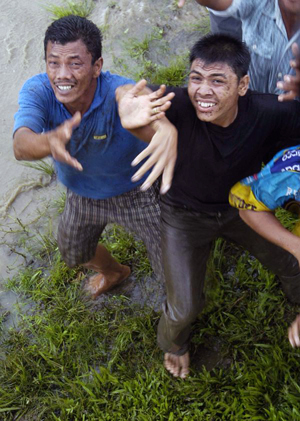1. Abstract
A catastrophic earthquake and tsunami that took place in Southeast Asia on
December 26, 2004 greatly influenced the dynamics of civil conflict in Aceh
province. Causing horrendous damages in Aceh province, the tsunami proved
to be an impetus to peaceful resolution of the civil conflict. This case study
presents analysis of the effects of natural disaster on reconciliation of
the conflict between the rebels of the Free Aceh Movement (GAM) and Indonesian
government that has been going on since 1976.
2. Description
"Concrete
houses were completely flattened, cars were squashed and piled up, with
massive boats sitting in the middle of rubble"1
The Indian Ocean tsunami on December 26, 2004, dubbed "Boxing
Day" Tsunami, resulted in death of 130,000 Acehnese and displacement
of 400,000 others. At the same time, it provided an opportunity to establish
peace in a war-torn province. Because of the unprecedented scale of devastation
and the dire need for help, the necessity for international aid to reach the
province prevailed over political interests. Although the tsunami did not
fundamentally change social dynamics of the conflict, since neither the Indonesian
military, nor the rebels incurred any significant people losses in the immediate
aftermath of the disaster, people's mentalities changed irrevocably.
Human Toll
Mostly women and children perished in the dark waters of Indian Ocean. The
population of Banda Aceh, the hardest hit area, consisted chiefly of young
people, with 50 percent younger than 15 years old. At the same time, according
to the study conducted by Flower Aceh, a local NGO, fewer women survived the
catastrophe then men. The ratios are staggering, in one case 40 women survived
in comparison with 750 men. Traditions of wearing long layered clothing and
their general role in society as main caregivers were some of the reasons
that women were less equipped to survive, the study suggests.
2 Because of the long traditional
clothing women could not run as freely or swim. As a result, a great number
of men were left with motherless children, and being unfamiliar with performing
such household tasks as cooking or washing clothes, had to adjust quickly.
|
Image
1US Navy photo by Photographer's Mate 3rd Class Tyler J. Clemens
Image
2 US Navy photo by Photgropher's Mate Airman Patrick M. Bonafede
|
The post-tsunami situation in Aceh required an immediate response from the
government to provide help in searching for survivors, burring bodies, providing
water, food, and shelter for the survivors. Indonesian government turned to
the military to execute the rescue and relief operations. Nevertheless, the
government did not order the military to abort the continuing search for rebels.
The government stance on issue of GAM after the tsunami resulted in unnecessary
deaths among civilians, who had learned to mistrust the military over the
years.
The Conflict
People in Aceh province have had to live with an ongoing conflict between
GAM and Indonesian military for thirty years. During this time, many had lost
their lives in the gunfight between the rebels and security forces. By some
estimates, over 15,000 Acehnese had died during the conflict, predominantly
civilians. The exact numbers remain unknown, since the province has been off
limits to international monitoring organizations for years of military rule.
What had begun as a struggle for independence in 1976 evolved into a fight
for the control over natural resources revenues. Both sides pursued both political
and economic goals, since the proliferation of the conflict ensured steady
flow of money from the sale of arms, illegal drugs, and extortion.
Many previous attempts at reconciling of the conflict were unsuccessful,
due to a number of reasons. Firstly, the tensions between the local population
and migrants, who moved into the region following lucrative jobs at the oil
and gas facilities, escalated due to economic crisis. Secondly, military's
violence against Acehnese added supporters to the GAM.
The most violent periods of the conflict are 1990-1998, 2003-2004. During
1990 to 1998 Aceh was declared a special combat zone” (DOM) giving military
carte blanche to torture and kill whoever they perceived to be rebel sympathizers.
On May 19, 2003 the Aceh region was put under the martial law (lasting one
year), again allowing Indonesian military (TNI) to conduct human rights abuse
with impunity. Horrifying TNI treatment of civilian Acehnese, named shock
therapy”, provoked a violent revolt and attracted more sympathizers to the
rebel movement. Ceasefire agreements, while reduced violence during 2000-2004
did not last for longer than eight subsequent months. Although, in 2002 Aceh
province was granted a special status, allowing implementation of shariah
law and greater revenue sharing, it did not appease rebels due to their overriding
distrust of government's actions. Only complete independence would guarantee
them fair distribution of revenues from region's natural resource use. (see
CNN timeline)
Conflict Resolution
The Indian Ocean tsunami pushed both conflicting sides to dispute resolution.
International media rushed into the region to bring the latest, most shocking
news to people worldwide. Such scrutiny revealed the atrocities taking place
in Aceh province, presenting Indonesian military and government in an unfavorable
light. Being in extremely vulnerable position and in need of international
help, Indonesian government reassessed the situation and resumed peace negotiations
with leaders of the GAM.
On August 15, 2005, after several months of negotiation, a peace agreement,
dubbed memorandum of understanding”,
was signed in Helsinki , Finland
(See the Photogallery of signing of the agreement). The Memorandum of
understanding prescribes implementation of two stages of agreement (1) initial
monitoring presence (IMP) and (2) Aceh monitoring mission (AMM) which
started September 15. The AMM is conducted by EU monitors together with representatives
from Norway and Switzerland and contributing countries from ASEAN ( Brunei,
Malaysia, Philippines, Singapore and Thailand ).
The rebels handed over a quarter of their weapons (approximately 210) on
Thursday, September 15, 2005. After the verification of weapons destructions
the military withdrew 25 percent of troops. Over 200 European and Southeast
Asian monitors are going to supervise the process of demilitarization in Aceh,
which would ultimately include withdrawal of a vast majority of Indonesian
military and police from the territory. Despite previous failures to achieve
an agreement on peaceful resolution of the conflict, the Indonesian government
and international community are optimistic that this historic agreement would
bring an end to the conflict.
3. Duration: 1976 - 2005
The Aceh/Sumatra Liberation Front (ASNLF), the precursor of GAM, declares
independence from Indonesia on December 4, 1976.
Memorandum of Understanding between the Government of Indonesia and the Free
Aceh Movement had been signed on August 15, 2005.
(see timeline of Aceh
conflict)
4. Location
Continent:
Asia |
Region:
Southeast Asia |
Country:
Indonesia |
Island:
Sumatra |
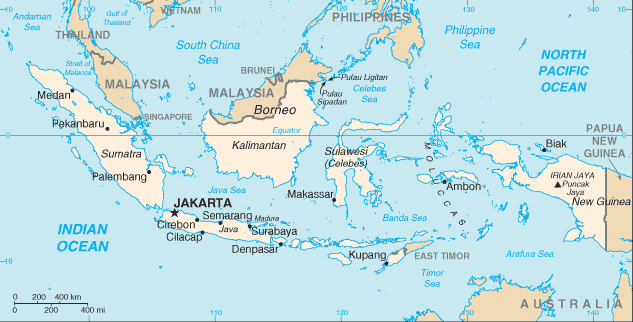
Map of Indonesia CIA Factbook
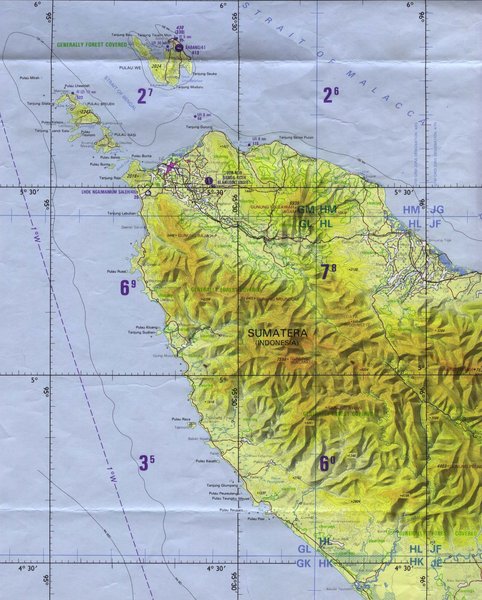
5. Actors
Free Aceh Movement
(Gerakan Aceh Merdeka, or GAM)- the rebel group founded in 1976.
Dr Tengku Hasan di
Tiro - a descendant of the last sultan of Aceh, and direct descendant of Teuku
Cik Di Tiro (famous hero of Aceh War for Independencw with Dutch during 1973-1913).
Hasan is a charismatic founder and supporter of GAM, who worked for the UN
before joining GAM.6
Indonesian military (TNI),
TNI General Endriartono Sutarto.
International Community:
EU observers, ASEAN monitors, Aid organizations.


|
Radar imaging of the tsunami
two hours after the earthquake. This image is a work of the National
Oceanic and Atmospheric Administration, taken or made during the
course of an employee's official duties.
|
tsunami
as means of wiping the slate of history clean” 3
The impact of environment on Aceh conflict proved to be tremendous. Like
in many other cases, environmental factors played a role of catalyst, resulting
in both negative and positive outcomes. While the dispute over proceeds of
natural resources revenues exacerbated hostilities between Aceh people and
Indonesian government, the tsunami tragedy alleviated tension and forced both
conflicting parties to compromise. Whereas in the first instance, abundance
of mineral resources had an indirect effect on ongoing conflict, the case
of tsunami presents a situation where its' consequences resulted in a significant
change of direction of the conflict.
More
links to images of the tsunami
6. Type of Environmental Problem: Habitat Loss
Earthquake and Tsunami
On December 26, 2004 an earthquake (9 on Richter scale) shook Indonesia .
Its' epicenter was less than a 100 miles away from the northernmost part of
the province of Aceh . As a result, the gigantic waves it caused turned into
tsunami ensuing colossal damages to the coastal areas. Neither the media,
nor the authorities warned citizens of upcoming earthquake and tsunami. Tsunami
warning system simply did not exist in South Asia to alert people living in
these areas. As a result, eleven countries were affected and thousands of
people vanished into the ocean (around 300,000).
The impact of the earthquake and tsunami on Acehnese habitat was manifold:
the villages were destroyed, previously arable lands got polluted by the seawater
(causing salinization), fisheries were demolished, coral reefs and beaches
washed away; roads, houses, hospitals, schools were wiped out.
Since the GAM's stronghold was mountainous terrain, the rebels did not incur
significant losses in their midst. Indonesian military suffered some losses,
but it is ordinary civilians who had to bear the brunt of the catastrophe.
Around 120 thousand people were found dead and over 700 thousand became displaced.
By the World Bank's estimates, the population affected by the disaster in
Aceh is around 2.8 million people.
Survivors
U.S. Navy photo by Photographer’s
Mate 3rd Class Benjamin D. Glass
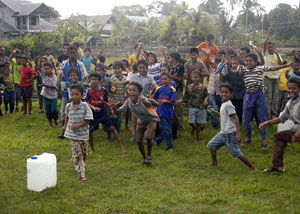 Those
who survived were experienced physical and psychological problems. Lack of
sanitation, post-traumatic shock, losses of loved ones, and a sight of dead
bodies exacerbated psychological trauma experienced by the tsunami victims.
When earthquakes happen, as they do so often here, people frequently feel
paralysis or numbing of the legs” says a medical expert, F. de Leval. Aceh's
population health status had been the lowest in Indonesia even before the
tsunami. According to the World Bank report 9, the number
of hospitals and doctors in Aceh presents 2% of Indonesian total. The medical
personell is concentrated in cities and is unwilling to go to rural areas
due to security concerns. After the disaster a threat of epidemic became an
overriding concern to authorities and international health organizations.
Due to the fact that the majority of roads in Aceh run near the coastal areas,
they were destroyed by the waves, making it very difficult to reach places
that were hit the most.
Those
who survived were experienced physical and psychological problems. Lack of
sanitation, post-traumatic shock, losses of loved ones, and a sight of dead
bodies exacerbated psychological trauma experienced by the tsunami victims.
When earthquakes happen, as they do so often here, people frequently feel
paralysis or numbing of the legs” says a medical expert, F. de Leval. Aceh's
population health status had been the lowest in Indonesia even before the
tsunami. According to the World Bank report 9, the number
of hospitals and doctors in Aceh presents 2% of Indonesian total. The medical
personell is concentrated in cities and is unwilling to go to rural areas
due to security concerns. After the disaster a threat of epidemic became an
overriding concern to authorities and international health organizations.
Due to the fact that the majority of roads in Aceh run near the coastal areas,
they were destroyed by the waves, making it very difficult to reach places
that were hit the most.
Fisheries
Fisheries incurred the heaviest losses: boats were damaged; many fishermen
were engulfed by the ocean; coastal villages destroyed. One of the psychological
issues for the local fishermen to overcome was a fear of water. On the other
hand, demand for fish plummeted, because many believed that it was poisoned
after devouring human remains in the ocean. Others lost their taste for fish
as another psychological side effect of the tsunami. As a result, fishing
industry, which previously represented 7 percent of GDP and employed about
100,000 people was one of the hardest hit. If before the tsunami fish was
a staple food for local population, afterwards many refused to consume it,
further weakenning the industry.
|
|
| Department of Defense photo by
Michael L. Bak |
U.S. Navy photo by Photographer's
Mate 3rd Class Jacob J. Kirk |
7. Type of Habitat: Tropical
8. Act and Harm Sites: (5) Commons impact nations: Indonesia,
Malaysia, India, Sri Lanka, Thailand, Maldives Is., Maynmar, Seychelles, Somalia

It all comes down to money, said a Western dimplomat in Aceh. Many
people on both sides make a comfortable living with such a smoldering
conflict,” the diplomat said. Some people get rich here with the
export of local marijuana, contraband trade and illegal cutting
of tropical woods.” 4
9. Type of Conflict: Civil
The result of ongoing conflict in Aceh is that for the last 30 years, the province's citizens
have been living in a low-level war zone – largely isolated from the rest of the world” 5
The Aceh conflict is civil; it can be characterized as strife between Indonesian
government and rebel movement (GAM). On one side, rebels were determined to
regain the province's sovereignty, which they believe was taken away from
them in 1949 when the Republic of Indonesia was created. Their other goal
was to reincarnate theocracy. On the other side, the Indonesian government
wanted to continue to receive revenues from lucrative gas extraction operations
that are situated on Aceh territory. The abundance of natural resources contributed
greatly to conflict proliferation. Acehnese people's discontent associated
with the usage and mishandling of natural resource, specifically, gas and
oil, added complexity to already controversial dispute. Local grievances over
disproportionate distributions of revenues from natural gas extraction combined
with degradation of land fueled the conflict with new force in 1989.
To curtail the spread of rebel movement, which became more agressive, Indonesian
government declared Aceh an area of military operations” or Daerah Operasti
Militar (DOM). The period of 1990-1998 was one of the most gruesome in history
of the conflict resulting by some estimates in 2,000 to 10,000 deaths. Despicable
acts of human rights violations conducted by Indonesian military shifted public
opinion drastically in favor of GAM, filling its' ranks with new recruits
and supporters.
According to UCLA Professor Michael Ross (2003) 6,
GAM has had three incarnations: the first
in 1976-79, when it was small and ill-equipped, and was easily suppressed
by the military; the second in 1989-91, when it was larger, better trained
and equipped, and was only put down through harsh security measures; and
the third beginning in 1999, when it became larger and better funded than
ever before, challenging the Indonesian control of the province.
During 30 years of guerilla war the GAM's membership grew from 150 to between
15,000 and 27,000 regular and irregular soldiers. It should be noted, however,
that the rebels still lacked weapons, with one of five fighters having a rifle.
The main actors of the conflict (GAM and its' supporters, Acehnese civilians,
TNI, Indonesian government, multinational corporation Exxon Mobile, International
organizations) had varied experiences of the conflict. For Acehnese, the deleterious
impact of conflict on their everyday life is unquestionable: a large number
of people was tortured and killed, others incarcerated; production was distracted,
households abandoned their fertile lands; overall economic development of
the province had stalled. At the same time, military insurgents had benefited
from the conflict through arms sale to GAM, pillaging, and corruption. At
the same time, Indonesian government had to increased its' spending on military
because of its dependence on its' operations. Exxon incurred significant losses
due to sabotage and personnel threats, while GAM enjoyed increased number
of recruits and supporters, who provided funds and munitions.
In 2000 the Aceh province was granted special autonomy and a larger revenue-sharing
scheme. Aceh government was allowed to retain up to 70% of oil and gas revenues.9
However, because of the widespread mistrust of the government's policies and
disbelief in successfull enforcement of these policies, the greivances of
the population and the conflict did not abate. The conflict seemed to be self-perpetuating.
Because the majority of weapons that belonged to the GAM were the same ones
that were used by TNI, it was difficult to determine the guilty party in the
conflict.10 As Human Rights Watch report emphasizes, "neither
side appears to be serious about holding members of its respective forces
accountable". Furthermore, "the army and police use troops out of
uniform so they can avoid responsibility for abuses and put the blame on GAM.
GAM reportedly sometimes sends members into action without uniform, so that
if they are killed by the army, GAM can claim them as civilian victims."10
Therefore, it would be unfair to pinpoint the "bad guys" in this
case. As M. Ross suggests, GAMs tactics were usually intended to increase
the support base and present the Indonesian government in a very unpleasant
light.
The Tsunami of December 26, 2004 brought hope to war-torn province. International
community's desire to help victims of tsunami and Indonesia's desperate need
of foreign funding put pressure on Indonesian government to put an end to
dehumanizing conflict in Aceh.
10. Level of Conflict: Intrastate (Medium)
11. Fatality Level of Dispute (military and civilian fatalities):
15,000
Fatality level of dispute approximate 15,000 dead, most of them
civilians. Fatality level according to logarithmic level - 5.

Recovery from the tsunami was complicated by the war between GAM
and TNI. Many survivors had moved inland, to the hills, where they were closer
to GAM fighters' hideouts. Since the Indonesian military had proved to be
indiscriminate in treatment of Acehnese, suspecting all of them to be GAM
sympathizers, victims of tsunami were now in danger of persecution from the
TNI. The indiscriminate treatment was justified by the military due to the
fact that often enough, it was one of the GAM's tactics where the fighters
would wear civilian clothes and act as civilians.
| |
Image 1 US Navy photo by Photographer's
Mate 3rd Class Jacob J. Kirk;.S. Image 2 Navy photo by Photographer's
Mate 3rd Class Gabriel Piper
|
A few years before the tsunami stroke, Aceh province had been under martial
law and unattainable for international organizations. The Indonesian government
explained this state of affairs as a necessary precaution; in the meantime,
trying to extinguish rebel movement, GAM. Despite the pressures coming from
the West to stop the conflict and reach a peaceful agreement, the Indonesian
government refused to recommence negotiations with GAM. Even after the catastrophic
tsunami, the army cordon was not removed from the worst-hit Aceh province,
making it difficult for aid to reach the victims.
Moreover, instead of concentrating their efforts on helping civilians, TNI
continued their hunt for rebels. The tsunami disaster gave TNI an advantage
in the continuous conflict with the GAM rebels. The Indonesian army was immediately
put in charge of somewhat conflicting functions: humanitarian relief and security
operations. As one of the army officials, Lieutenant Colonel Nachrowi told
Jakarta Post the raids to quell the secessionist movements in Aceh will continue
unless the president issues a decree to lift the civil emergency and assign
us to merely play a humanitarian role in Aceh.” At the same time, the Presiden
Susilo Bambang Yudhoyono beseeched rebels to end the 30-year conflict and
join the forces in rebuilding the region. The Acehnese who lost their homes
and relatives were put impossibly hard position, since they became dependent
on Indonesian military (the same people that killed and tortured them over
the years) to provide them with food, water, and help in looking for the loved
ones. Thus, a great deal of unnecessary deaths occurred because of difficulties
involved in getting supplies to tsunami victims through the army cordon.
As one wealthy Indonesian woman describes her experience with TNI 7:
It dawned on us that the military was conrolling
all of the incoming domestic and foreign aid and that there had been little
done to distribute any of it! Apparently they were expecting villagers to
come to the posko (command post) of refugee camps in Banda Aceh, which is
unlikely since a lot of these stranded survivors were just too far away,
not to mention some severely wounded, with no means of transport to get
themselves there. We also discovered that the military was afraid that the
aid would come into the hands of GAM rebel, which seemed to us such a minor
problem in the face of such catastrophe.”
At the same time, attention of international media and aid organizations
provided an impetus for Indonesian government to resume negotiations in order
to permanently end the conflict in Aceh. Due to government's desperate need
of international donors' money to rebuild the province, it finally opened
up Aceh province for international aid organizations and volunteers. In turn,
this increased the awareness of international community of Acehnese plight,
leading to growing pressures on Indonesian government to reach peace agreement.
12. Environment-Conflict Link and Dynamics:
Causal Diagram:
Natural resources and human rights abuses are the main themes
of the conflict between the GAM and Indonesian government. The lower left
corner of the diagram shows the positive reinforcing dynamics of the conflict.
Both economic and political incentives exacerbate the intensity of the conflict.
This, in turn, gives reason for Indonesian government to better fund its military.
At the same time, while both conflicting parties are involved in human rights
violation, this serves their political and economic interests. The upper part
of the diagram presents an explanation of the negative effects of the tsunami
on habitat, population, economy and how these effects resulted in positive
outcome of the conflict. Mainly because of the pressures of international
community and the need for Acehnese people to return to normal life, the conflict
receded.

13. Level of Strategic Interest: Sub-state
|
Image
1 US Navy photo by Photographer's Mate Patrick M. Bonafede;
Image
2 .S. Navy photo by Photographer's Mate 2nd Class Philip A. McDaniel
|
Primarily SUB-STATE. Aceh province holds a special autonomous
status in Indonesia.
14. Outcome of Dispute: Compromise
COMPROMISE. An agreement between Indonesian government and Free Rebels Movement
(GAM) was reached during 6 day talks in Helsinki , Finland . It was signed
on August 15, 2005. The Indonesian government granted a status of special
autonomy”, agreed to release GAM prisoners, and offered a number of economic
concessions. On the other hand, GAM dropped demands for full independence
and agreed to hand over 900 weapons for destruction. So far, the process has
been successful with no signs of backing out by either side. With oil prices
rising precipitously, the level of strategic importance of peace in Aceh is
higher than ever before. Hopefully, the international interest in Aceh's affairs
would preclude conflict from regress.
Rebels who in the past refused to leave their jungle hideouts, have been
spotted in Aceh's provincial capital, sipping coffee with relatives and friends”,
says Information Minister Sofyan Djalil. 8
As of November 19, 2005, the rebels handed over 570 weapons. In return, the
government withdrew over 2,000 insurgents (the Indonesian military and police
force). The overt violence has been stopped in Aceh. In the face of tragic
events in Indonesia, such as earthquake and bird flu, the main focus for the
government is to facilitate the return to the normal life.

15. Related ICE and TED Cases
Noah Just
like in this case, despite the devastation that the flooding of the Nile incurred,
it contributed favorably to the region's fertility.
Jayamine (Irian
Jaya Mine and Conflict) for its' relation to the region (West Papua , Indonesia
) and involved parties (Indonesian military, people of West Papua ). This
case is also closely related for its emphasis on human rights abuses of the
civil population and the scope of international attention.
Ogonioil ICE(Nigeria
Pertrolium Pollution in Ogoni Region) is related because of its similar dynamics
of conflict and sources of grievances: devastation of the farming land by
oil/gas-hungry multinationals, underemployment of local workers, military
involvement, civilian murders and tortures, etc.
Chechnya
(Chechnya Conflict and Environmental Implications) is related because
of several similarities between the conflicts in Aceh and Chechnya : muslim
population, strive for independence, richness in natural resources, dire human
rights violations, and top military unwillingness to stop the conflict due
to their gains from the conflict.
Sudansanction
(The Civil War in Sudan: the Human Price of Oil), Ecuador (Ecuador
Oil Exports), Azeroil (Azerbaijan
Oil Consortium), and Russoil (Khanty
Mansi Oil Development), are somewhat related due to the similar conflict undertones,
such as strong dependence of these regions on natural resource extractions
and ethnic violence.
Aceh (The
Acehnese Resistance Movement and Exxon Mobil). It is directly related to the
topic of my case, since it addresses the very same population, region, and
environmental problems; however, from a different angle.
Peten
(Guatemala-Maya Civil War) and ICE Case No. 26– Tupac (Tupac
Amarau Uprising and Environment) are both related in a sense that just like
in my case, military actions provoked civilian support and sympathies towards
rebels movements.
16. Relevant Websites and Literature

Pictures taken for this website are courtesy of Wikipedia
and US Navy
(1) Ford, Petrana, Mental
Health Practice; Sep 2005, Vol. 9 Issue 1, p42-44, 3p. return
(2)Gee, John , Washington Report
on Middle East Affairs, Aug2005, Vol. 24 Issue 6, p40-41, 2p, 1c return
(3) John Rosa, Aceh's Dual
Disasters: The Tsunami and Military Rule, January 11, 2005
return
(4)
Civil
war takes backseat to survival. By: Kestenholz, Daniel. National Catholic
Reporter, 8/12/2005, Vol. 41 Issue 36, p14-15, 2p; ( AN 17895705 ) return
(5) Story from BBC News http://news .bbc.co.uk/go/pr/fr/-/1/hi/world/asia-pacific/3039243.stm
return
(6)Ross, M.2003.”Resources
and Rebellion in Aceh , Indonesia .” Paper prepared for the Yale University-World
Bank Case Study Project on the Political Economy of Civil Wars. return
(7)
http://www.indonesiaalert.org/article.php?id=89
Aceh's Dual Disasters: The Tsunami and Military Rule by John Roosa, January
11th, 2005. return
(8) Jerry Norton, Key test
looms in Indonesia 's peace deal in Aceh, Sep 13,2005, Reuters. return
(9)Technical Report Prepared by BAPPENAS"INDONESIA:
Preliminary Damage and Loss Assessment, the December 26, 2004 Natural Disaster",
The Consultative Group of Indonesia, January 19-20, 2005.
(10) Human Rights Watch,
"Indonesia: The War in Aceh", Vol. 13, No. 5 (C).
Hagmann, T. 2005. Confronting the Concept of Environmentally Induced Conflict.”
Peace, Conflict and Development: Issue Six, January 2005.
Barron, P., K. Kaiser, M. Pradan. 2004. Local Conflict in Indonesia : Measuring
Incidence and Identifying Patterns.” World Bank, (July 2004).
ICG. 2001. Indonesia : Natural Resources and Law Enforcement.” International
Crisis Group: Jakarta/Brussels.
ICG. 2003. Indonesia : Managing Decentralization and Conflict in Indonesia
.” 44. International Crisis Group: Jakarta/Brussels, ICF Asia Report, (18
July).
Wilson, C. 2001. Internal Conflict in Indonesia : Causes, Symptoms and Sustainable
Resolution.” Parliament of Australia . Research Paper 1 2001-2002. Available
at http://www.aph.gov.au/library/pubs/rp/2001_02RP01.htm:
Canberra .
Indonesia at a Crossroads. 2004. A Survey by The Economist, (December 11
th -17 th ).
http://www.findarticles.com/p/articles/mi_m0WDQ/is_2005_April_11/ai_n13601633 Indonesia to offer concessions to rebels.
Asian Political News
http://www.cnn.com/2003/WORLD/asiapcf/southeast/05/19/aceh.timeline/index.htm
Timeline of Aceh done by CNN
http://www.cnn.com/SPECIALS/2003/aceh/
More CNN links
http://cnn.com/2003/WORLD/asiapcf/southeast/05/15/indo.aceh.feat/index.htmlAceh:
Resources and Rebellion by Amy Chew, CNN
http://abc.net.au/ra/news/viewpoints/s1421720_to.htm
High hopes for peace in Aceh Sofyan Djalil, Indonesian communications minister
- 25/07/2005
http://www.gmu.edu/departments/icar/Aceh_PZs.pdf
Peace Zones in Aceh, a research paper by Pushpa Iyer
http://www.indonesiaalert.org/ Indonesia
Alert News
http://www.acehtimes.com/ Aceh Times
http://www.fpif.org/papers/PR2005aceh_body.htmlForeign
Policy in Focus paper
http://tapol.gn.apc.org/ The Indonesia Human
Rights Campaign http://www.acehkita.com/
http://www.insideindonesia.org/
http://www.kairoscanada.org/e/countries/indonesia/background.asp
Background information on the conflict in Aceh, January 20, 2005
http://acehnet.tripod.com/ very useful
links
http://en.wikipedia.org/wiki/Aceh
Wilkipedia Aceh Info
http://www.preventconflict.org/portal/main/maps_sumatra_conflict.php
Program on Humanitarian Policy and Conflict Research
http://www.fas.org/irp/world/para/aceh.htm
Info on GAM and Conflict
http://www.fas.org/irp/crs/RS20572.pdf
CRS Report to Congress "Indonesian Separtist Movement in Aceh"
http://www.grameenfoundation.org/welcome/tsunami_recovery/
Grameen Foundation Website
http://www.hrw.org/reports/2001/aceh/
Human Rights Watch Publications "Indonesia and the War in Aceh"
http://www.digitalglobe.com/images/tsunami/Banda_Aceh_Tsunami_Damage.pdf
More images of Tsunami devastation by Digital Globe
http://www.idepfoundation.org/aceh_aid.html
IDEP Foundation links
http://www.hrw.org/campaigns/indonesia/aceh.htm
Human Rights Watch links to information on Aceh
http://msnbc.msn.com/id/9323908/Indonesian
troops begin Aceh pullout.. MSNBC Sep/14/2005
http://www.acehtsunami.org/ Aceh &
Sumatra Utara tsunami disaster - Crisis Information Center http://www.democracynow.org/article.pl?sid=05/01/04/160250
Exxon Mobil, Aceh and the Tsunami (an article in "Democracy Now" Jan/04/2005)
http://come.to/aceh_links A number
of useful Aceh links
November 17, 2005
© Svetlana Sinitchkina
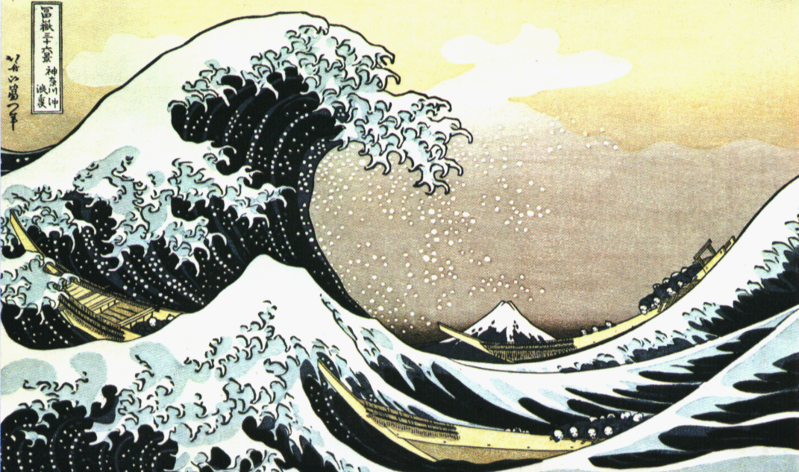

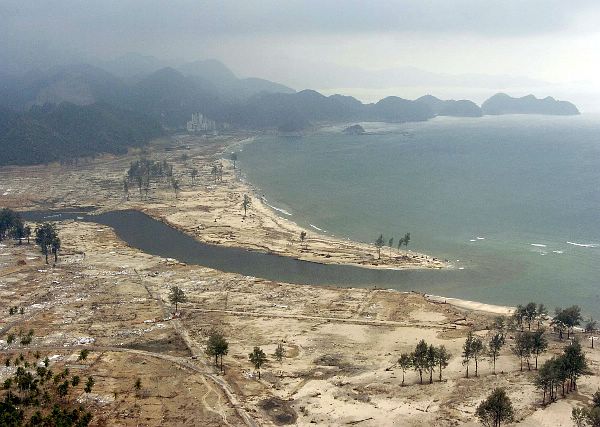


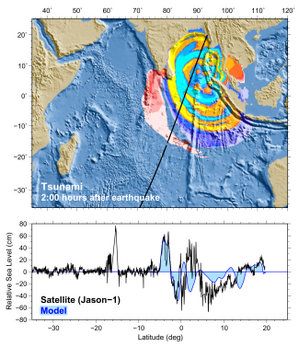
 Those
who survived were experienced physical and psychological problems. Lack of
sanitation, post-traumatic shock, losses of loved ones, and a sight of dead
bodies exacerbated psychological trauma experienced by the tsunami victims.
When earthquakes happen, as they do so often here, people frequently feel
paralysis or numbing of the legs” says a medical expert, F. de Leval. Aceh's
population health status had been the lowest in Indonesia even before the
tsunami. According to the World Bank report
Those
who survived were experienced physical and psychological problems. Lack of
sanitation, post-traumatic shock, losses of loved ones, and a sight of dead
bodies exacerbated psychological trauma experienced by the tsunami victims.
When earthquakes happen, as they do so often here, people frequently feel
paralysis or numbing of the legs” says a medical expert, F. de Leval. Aceh's
population health status had been the lowest in Indonesia even before the
tsunami. According to the World Bank report 



